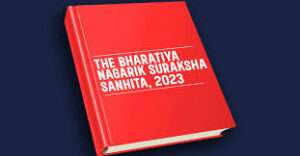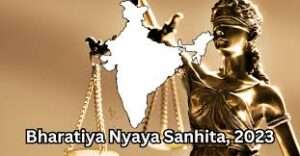
This article has been written by Aishah Afreen Misbah (a III Year, BA LLB (Hons.) Student at the School of Law, CHRIST, Bangalore)

INTRODUCTION
Cyberspace is a virtual domain in which several computers are linked to share data, information, knowledge, and documents. It is also a place where two or more people may interact and speak with one another. The objective of this essay is to emphasise copyright difficulties in cyberspace and analyse how it has evolved into a wide arena for content generation, dispersion, and consumption. The fast advancement of technology and the internet has transformed how we exchange and access information, altering traditional copyright regulations and presenting significant legal challenges. As a result, understanding and navigating the copyright code in cyberspace has become critical. This essay looks into the complexities of copyright law, investigates the issues provided by the digital sphere, and considers various remedies to align copyright protection with the digital reality.
Howdy, you all! Welcome to your page of knowledge. You will find different legal blogs, the latest news, current affairs, and many more on this channel. This is the initiative to develop the knowledge of the law in the world, especially for you.
According to the Business Dictionary, copyright is a legal monopoly that protects published or unpublished original work from unauthorised replication without sufficient acknowledgement and recompense. Understanding copyright in connection to computer programs/software, databases, and various works in cyberspace are key intellectual property legal concerns in the digital era. The term “property” comes from the Latin word ‘proprius’, which means “one’s own.” Keeping this in mind, the term “intellectual property” refers to the legal rights that can be established in respect to the intellect of a human product.[1]
COPYRIGHT ISSUES IN CYBERSPACE
Prior to the internet, authors’, publishers’, and the general public’s rights were generally aligned due to one key fact: providing public access to content was expensive, regardless of whether content creators required financial incentives to create or content distributors required financial incentives to make the necessary investments to distribute those works to the general public. Because of the costs of copying and distribution, the interests of artists and distributors were frequently united together under copyright law. The question here is what happens if works are publicly and illegally duplicated and spread in cyberspace. Unauthorised peer-to-peer sharing, as well as unauthorised hearings via YouTube and other social networking sites, are emerging digital phenomena that are raising consternation.
According to the Copyright Act, infringement occurs when someone:
(a) Allows the illegal use of another’s copyrighted work with knowledge;
(b) Profits from an activity that involves the use of another’s property. work that is protected by a copyright; and
(c) Makes use of any of the copyright rights that are only available to the copyright owner.[2]
Copyright infringement has taken on new forms in cyberspace as a result of information technology which are as follows:
- Caching
Temporary copying (also known as caching) is a critical component of the internet transmission process, without which messages would be unable to transit through networks and reach their intended destinations. Physical reproduction is required by Indian law, but it also includes “storing it in any medium by electronic means,” making caching a copyright infringement.
- Linking and Hyperlinking
Linking is a feature that allows users to reach a third-party website by simply clicking on a place on the linking site without entering any geographical information or using a search engine. Typically, links are highlighted, underlined, or prominently displayed in text or graphics. There are two kinds of links: Surface Linking and Deep Linking.
- Downloading and Uploading of Copyrighted Material
This is true when people receive unauthorised copies of copyrighted information via file-sharing platforms, pirate websites, or other online sources. Even if a person downloads or uploads content for personal use, it may still be unlawful if the copyright owner has not granted permission or if the work is not accessible under a licence that allows such usage.
- Peer to Peer Sharing (P2P) Sharing
Peer-to-peer file sharing eliminates the need for an intermediary server. Although peer-to-peer (P2P) technology was not intended to promote copyright infringement, it is increasingly being used to download unlawfully pirated items. Some well-known P2P technologies, such as Napster, Gnutella, and Kazaa, enable users to exchange, send, and download files over the internet without losing quality. MP3 technology entails compressing sound files to a minimal size and quickly delivering them over the Internet. Anyone running a network comparable to Napster in India is subject to liability under Sections 14 and 51(a)(ii) of the Copyright Act, 1957. It led to the death of Napster and the rise of more effective P2P networks.
Computers that can readily replicate digital information are very inexpensive in compared to the equipment necessary to generate huge numbers of physical copies of cassettes and CDs, making proof of copyright infringement over the Internet exceedingly difficult to collect from the end user. As a result, piracy has become prevalent. The most challenging process is discovering the person who downloaded copyrighted information and then reproduced it into tangible media for sale.[3] Despite the fact that Section 64 of the Copyright Act empowers police to take action against copyright infringement even without a Magistrate’s order, they fail to do so, either because they are unaware of how to prosecute these offences or because they are uninterested in these types of crimes. It is also worth noting that, despite technological incompetence. Copyright infringement on the internet may easily go unnoticed since, unlike in real space, it occurs behind closed doors. As a result, unauthorised copies are transferred electronically rather than physically, making it harder for law enforcement agencies to trace down and identify online copyright pirates.[4]
REMEDIES PROVIDED BY CYBER LAW
- The Copyright Act, 1957
The Copyright Act of 1957 provides three types of remedies in the event of a copyright infringement:
- Civil Remedies (sections 54-62),
- Criminal Remedies (sections 63, 63B), and
- Administrative Remedies (sections 54-62).
The Copyright (Amendment) Act 2012
The Copyright Amendment Act of 2012 is a landmark piece of legislation that tackles copyright concerns in cyberspace. This legislation was passed in order to modernise and match copyright rules with the problems of the digital era. It acknowledges the challenges of copyright in the internet environment and includes procedures to govern and protect copyrighted works in cyberspace. The statute recognises the significance of digital rights management (DRM) technology in protecting copyrighted works. Furthermore, the legislation includes anti-circumvention laws that make it unlawful to tamper with or bypass DRM systems with the goal of infringing on copyright. In addition, the legislation recognises the significance of fair use and educational exceptions in the digital environment. It permits for the restricted use of copyrighted content for educational purposes.
The Information Technology Act, 2000
Section 43 (a) of the Information Technology Act of 2000[5] is intended to prevent persons from infringing on the intellectual property of others. According to this section, anyone who gains access to, or secures access to, a computer, computer system, or computer network, or downloads, copies, or extracts any data, database, or information from it, including information or data held or stored in any other medium, will be liable for damages not exceeding one corer rupee. However, while establishing compensation, the amount of gain, as well as other considerations, must be considered.[6]
The Information Technology Act of 2000 addressed the misuse of technology in the form of cybercrime. However, it has failed to address intellectual property challenges and its protection. Similarly, the Indian Trademark Act of 1999 and the Copyright Act of 1957 are mute on concerns of online trademark and copyright infringement. The Copyright Act protects computer programs, but it does not offer remedies for online software infringement. Cybersquatting is also not explicitly penalized under the IT Act.
ROLE OF INDIAN JUDICIARY
The Indian judiciary is quite tough when it comes to online piracy. To avert copyright infringement, the Delhi High Court issued Jone Doe orders, or injunction orders, against prospective unknown offenders prior to the release of films such as Speedy Singhs, Singham, Don 2, and Bodyguard. As a result of the Jone Doe ruling, Internet Access Providers (IAPs) have blocked many file-sharing websites, including Megaupload and Filesonic. The Calcutta High Court has ordered Internet service providers to block certain websites that disseminate illegal music. Similarly, software owners may get John Doe orders to prevent internet software piracy.
In Microsoft Corporation v Yogesh Popat[7], the Delhi High Court dealt with a copyright infringement case, awarding Microsoft Corporation compensation of Rs 23.62 lakh against M/s Compton Computers Private ltd and its directors for uploading pirated Microsoft software in computers the company sold after assembling parts.
CONCLUSION
Intellectual property is a cultural value that highlights that information cannot be monopolized and must be freely distributed, much like a lighted lamp dispels the darkness of ignorance. Intangible assets such as intellectual property rights contribute greatly to the growth of technology, innovations, art, services, goods, and national economies. At all costs, intellectual property rights must be protected. We can only sustain such vigilance if we comprehend intellectual property rights problems and take early action to protect our legitimate interests. It has become considerably more crucial as a result of the global repercussions of information technology. Engineers and scientists have created technologies that allow computer users to engage internationally in recent years.
The emergence of such technologies, however, creates significant legal and regulatory challenges to the protection of intellectual property rights in cyberspace, such as copyright, patents, and trademarks. Some intellectual property rights concerns are uncommon, forcing a re-evaluation of established legal and regulatory frameworks that may or may not be compatible with this new technology. These technological breakthroughs jeopardise the core concepts of intellectual property rights and their protection. The myriad challenges provided by technology are associated with dissemination, catching, connecting, copyright protection, and so forth. As a result, striking a proper balance between private rights and public interest in cyberspace may necessitate considerable work.
END-NOTES
- Krishna Kumar, Cyber Laws-Intellectual Property And E-Commerce Security (Dominant Publishers and Distributors 2011)
- The Copyright Act, 1957, s 51, No. 14, 1957 (India)
- N.S. Gopalakrishna, Intellectual Property And Criminal Law, (Bangalore: NLSIU 1994)
- Harvard Law Review Association, The Criminalisation of Copyright Infringement in the Digital Era, 112 (7) HARV. L. REV., 1705, (1999)
- Information Technology Act, 2000, s 43(a), 2000 (India)
- Nandan Kamath, Computers Internet And E-Commerce, (Universal Law Publishing
Co 2012) 153
- Microsoft Corporation v. Yogesh Popat 118 (2005) DLT 580, 2005 (30) PTC 245 Del.
[1] Krishna Kumar, Cyber Laws-Intellectual Property And E-Commerce Security (Dominant Publishers and Distributors 2011)
[2] The Copyright Act, 1957, s 51, No. 14, 1957 (India)
[3] N.S. Gopalakrishna, Intellectual Property And Criminal Law, (Bangalore: NLSIU 1994)
[4] Harvard Law Review Association, The Criminalisation of Copyright Infringement in the Digital Era, 112 (7) HARV. L. REV., 1705, (1999)
[5] Information Technology Act, 2000, s 43(a), 2000 (India)
[6] Nandan Kamath, Computers Internet And E-Commerce, (Universal Law Publishing
Co 2012) 153
[7] Microsoft Corporation v. Yogesh Popat 118 (2005) DLT 580, 2005 (30) PTC 245 Del.






